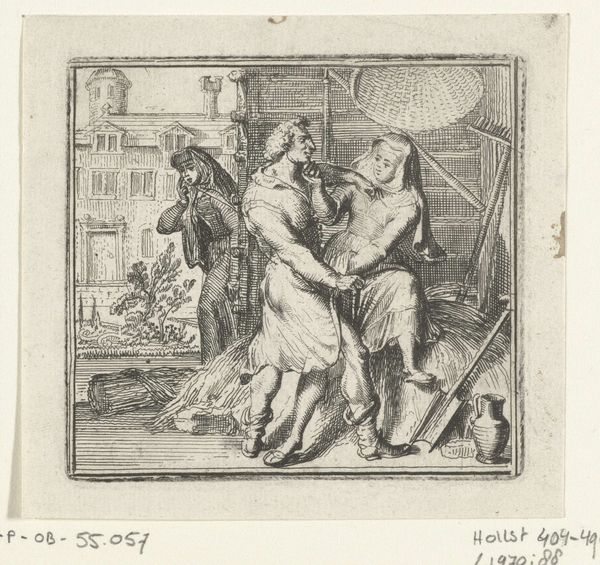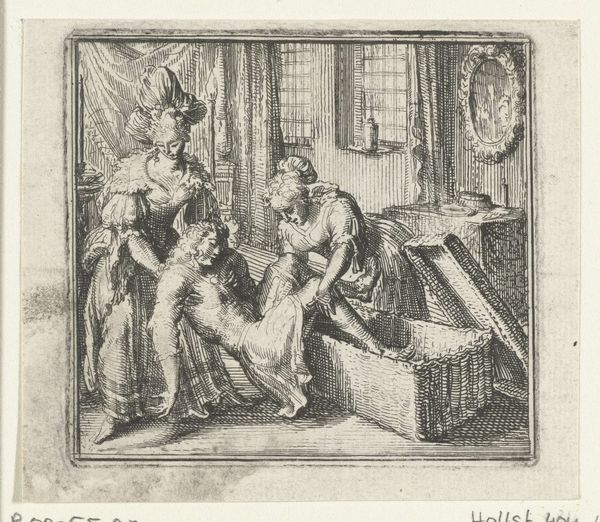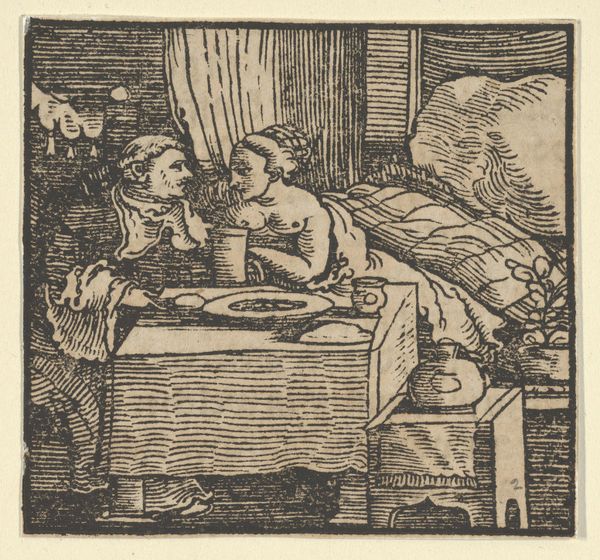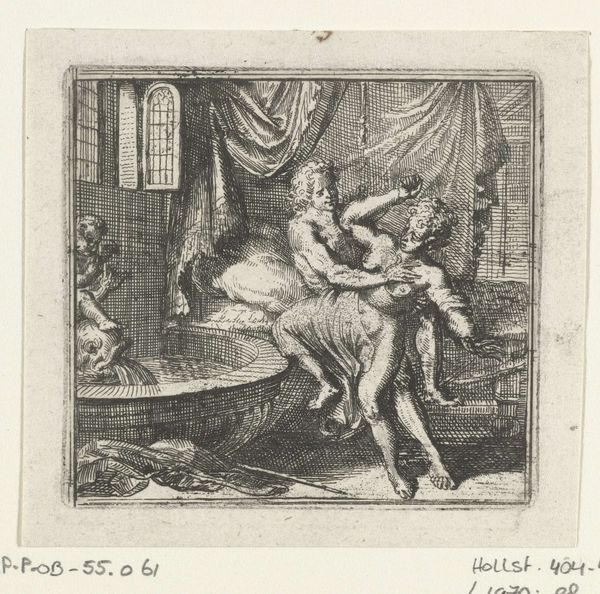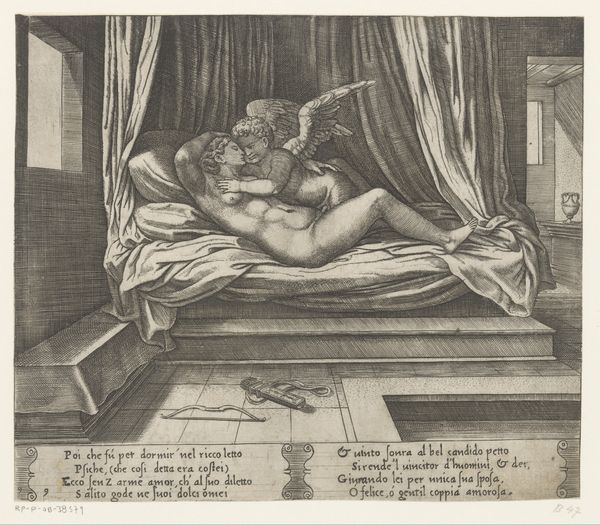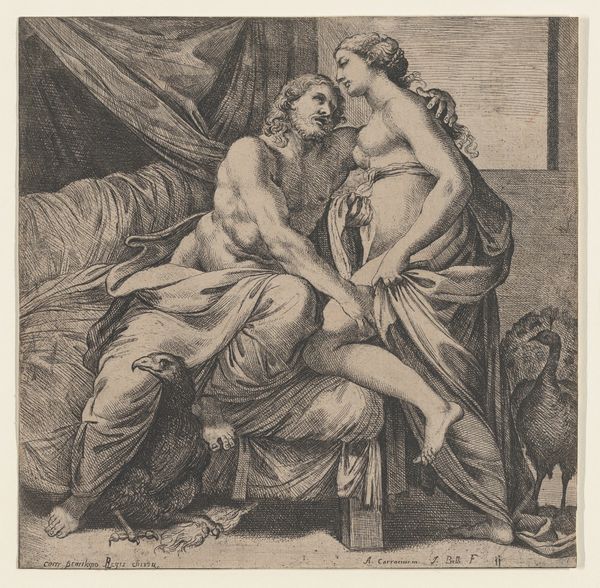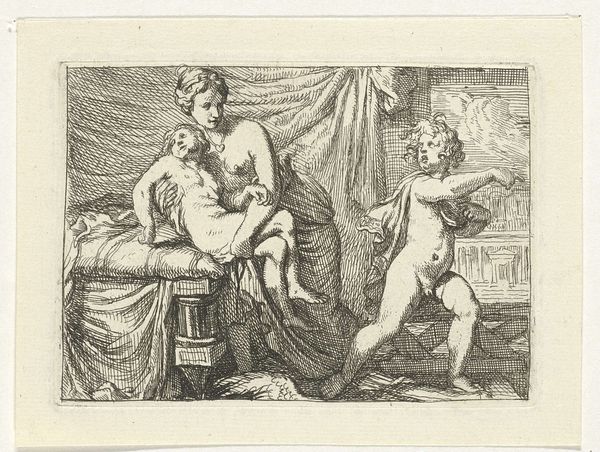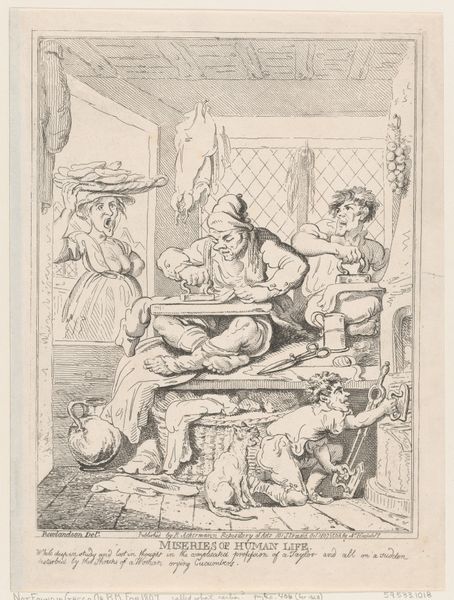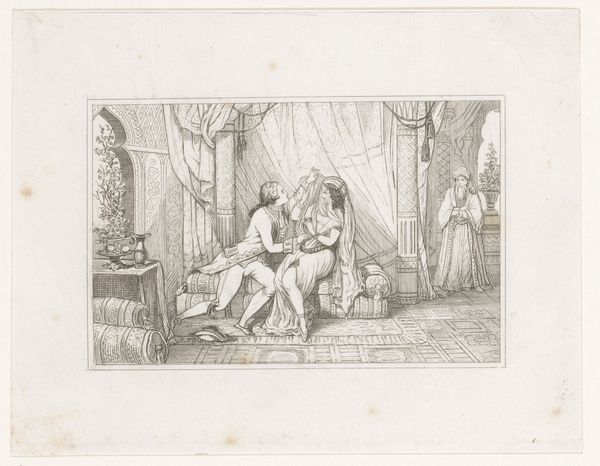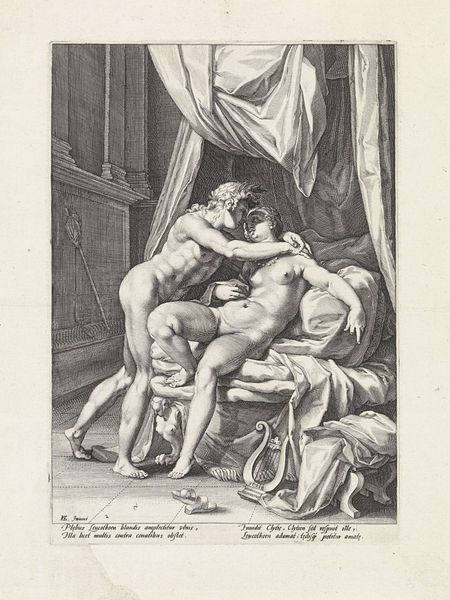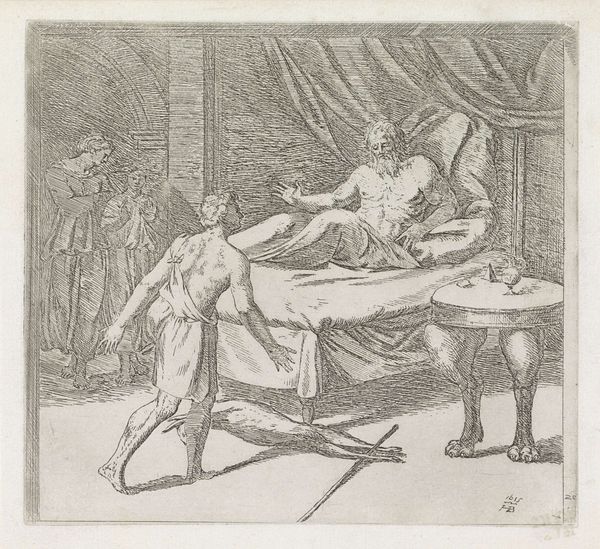
print, etching, engraving
#
narrative-art
#
baroque
# print
#
etching
#
figuration
#
genre-painting
#
engraving
#
erotic-art
Dimensions: height 74 mm, width 79 mm
Copyright: Rijks Museum: Open Domain
Curator: This intriguing piece before us is an etching and engraving crafted in 1697 by Romeyn de Hooghe. The artwork is an Illustration for Boccaccio's Decameron. Editor: The sharp contrasts create a dramatic mood. Look how the candlelight emphasizes the subjects' intimate setting, and also contributes a sense of suspense. Curator: De Hooghe's illustrations played a crucial role in shaping public perception of historical and literary narratives like Boccaccio's. This print is a glimpse into how the late 17th-century viewed and consumed such stories, highlighting evolving social norms regarding eroticism and morality. Editor: Formally, I find the composition compelling, with the architectural structure dividing foreground action and background inaction to create two levels of voyeuristic appeal. The textures achieved through cross-hatching are amazing. Curator: And don't forget the historical context. Boccaccio's Decameron was already centuries old at this point. De Hooghe's work represents an interesting intersection of the Renaissance with the burgeoning visual culture of the Baroque era. Editor: The single candle becomes such a key semiotic element, and you can see in the image the careful attention paid to the folds of fabric. But that stark, almost clinical light, contributes so much to the overall reading of the piece, wouldn't you agree? Curator: Absolutely. By revisiting the classic tales within a Dutch socio-political framework, de Hooghe engaged audiences with themes of love, desire, and societal values. The popularity of such imagery says much about the social climate of the time. Editor: It's precisely this dance of light and shadow, framing this intimate tableau, that arrests the viewer. Curator: Analyzing prints like this from de Hooghe allows us to access and contextualize a pivotal point in art and literature's cultural journey. Editor: It seems even in monochrome, color emerges—through gradations, light, and detail, it speaks so profoundly to form.
Comments
No comments
Be the first to comment and join the conversation on the ultimate creative platform.
